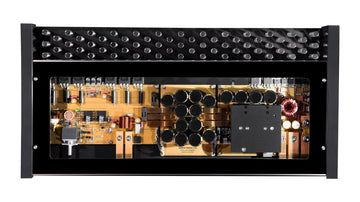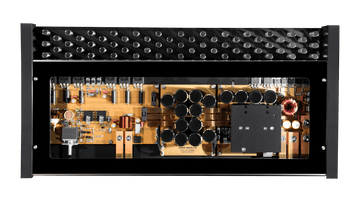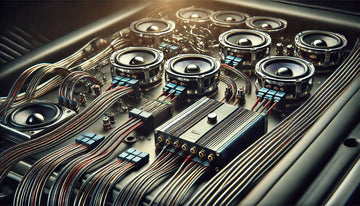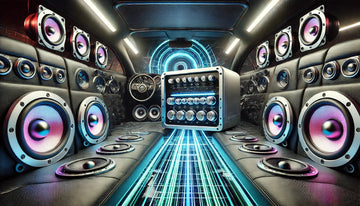Car Amplifier Basics
Your Complete Guide to Understanding Car Audio Amplifiers
What Are Car Amplifiers?
Understanding car amplifier basics is the first step to building an amazing car audio system. A car amplifier takes the weak signal from your radio or phone and makes it much stronger. This stronger signal can power your speakers properly, giving you cleaner and louder sound.
Think of your car amplifier like a megaphone for your music. Without enough power, your car speakers can't perform their best. They might sound weak, distorted, or lack the punch you want from your favorite songs.
Why You Need an Amplifier
- Factory radios only provide 10-15 watts per channel
- Quality speakers need 50-100+ watts to sound their best
- Amplifiers reduce distortion and improve sound clarity
- Better control over volume and dynamic range
Types of Car Amplifiers
Learning about different amplifier types is crucial for car amplifier basics. Each type serves different purposes in your audio system.
Monoblock Amplifiers
Monoblock amplifiers are designed for one job: powering subwoofers. These single-channel amps focus all their power into driving your car subwoofers for deep, powerful bass.
Best For:
- • 12-inch subwoofers
- • 8-inch subwoofers
- • Bass-heavy music systems
- • Competition audio setups
4-Channel Amplifiers
4-channel amplifiers are perfect for powering your front and rear speakers. These versatile amps are great for beginners learning car amplifier basics because they handle multiple speakers with one unit.
Best For:
- • Front and rear car speakers
- • Component speaker systems
- • Full-range audio upgrades
- • Space-efficient installations
Amplifier Classes Explained
Understanding amplifier classes is an important part of car amplifier basics. Different classes offer different benefits for efficiency and sound quality.
Class D Amplifiers
Class D amplifiers are the most efficient type, converting up to 90% of power into audio signal. They run cool and save battery power, making them perfect for most car audio systems.
Pro Tip: Class D amps are ideal for subwoofers and high-power applications where efficiency matters most.
Class AB Amplifiers
Class AB amplifiers offer the best sound quality for critical listening. Audiophiles prefer these amps for their natural, warm sound reproduction, especially for high-quality speakers.
Pro Tip: Class AB amps excel with component speakers and when sound quality is more important than efficiency.
Understanding Amplifier Power
Power Ratings Explained
RMS Power
Continuous power the amp can deliver safely. This is the most important number for matching with speakers.
Peak Power
Maximum power for short bursts. Useful for dynamic music with sudden loud passages.
Impedance
Resistance of your speakers (usually 2, 4, or 8 ohms). Must match amp specifications for proper performance.
Power Matching Guide
Proper power matching is crucial in car amplifier basics. Here's how to match your amplifier with speakers:
| Speaker Type | Recommended Amplifier Power | Best Amplifier Type |
|---|---|---|
| Factory Speakers | 25-50W RMS per channel | 4-Channel Amplifier |
| Component Speakers | 50-150W RMS per channel | Class AB Amplifier |
| Subwoofers (8-10") | 200-500W RMS | Monoblock Amplifier |
| Subwoofers (12-15") | 500-1500W RMS | High-Power Monoblock |
Installation Basics
Installing your amplifier correctly is a key part of mastering car amplifier basics. While professional installation is recommended, understanding the process helps you make better decisions.
Essential Installation Steps
- 1 Choose proper mounting location (dry, ventilated area)
- 2 Run power wire from battery to amplifier location
- 3 Install fuse near battery for safety protection
- 4 Connect signal cables from radio to amplifier
- 5 Wire speakers to amplifier outputs
- 6 Test system and adjust settings
Safety Reminders
Always disconnect the battery before installation
Use proper gauge wire for your amplifier's power needs
Install fuses within 18 inches of the battery
Consider professional installation for complex systems
Modern Amplifier Features
Today's amplifiers include advanced features that make car amplifier basics more accessible and effective than ever before.
Built-in DSP
Digital sound processing allows precise tuning of your audio system. DSP systems can correct acoustic problems in your vehicle.
Thermal Protection
Modern amps automatically reduce power when they get too hot, preventing damage and ensuring reliable performance during long listening sessions.
Variable Bass Boost
Adjustable bass enhancement lets you tune the low-frequency response to match your music preferences and vehicle acoustics.
Crossover Controls
Built-in high-pass and low-pass filters help direct the right frequencies to the right speakers for optimal performance.
Signal Sensing
Automatic turn-on when music starts playing eliminates the need for remote wires in many installations.
Compact Design
Modern amplifiers pack more power into smaller packages, making installation easier in space-limited vehicles.
Complete System Integration
Understanding how amplifiers work with other components is advanced car amplifier basics. A well-planned system delivers the best performance and value.
Component Matching
- Match amplifier power to speaker capabilities
- Consider subwoofer enclosure requirements
- Plan for DSP integration if needed
- Calculate total system power requirements
Advanced Integration
- Use DSP amplifiers for all-in-one solutions
- Consider multiple amplifiers for complex systems
- Plan proper electrical system upgrades
- Include room for future system expansion
Ready to Upgrade Your Car Audio?
Now that you understand car amplifier basics, it's time to choose the right amplifier for your system. Browse our complete selection of premium amplifiers from top brands.
Need help choosing? Contact our audio experts for personalized recommendations based on your vehicle and music preferences.





